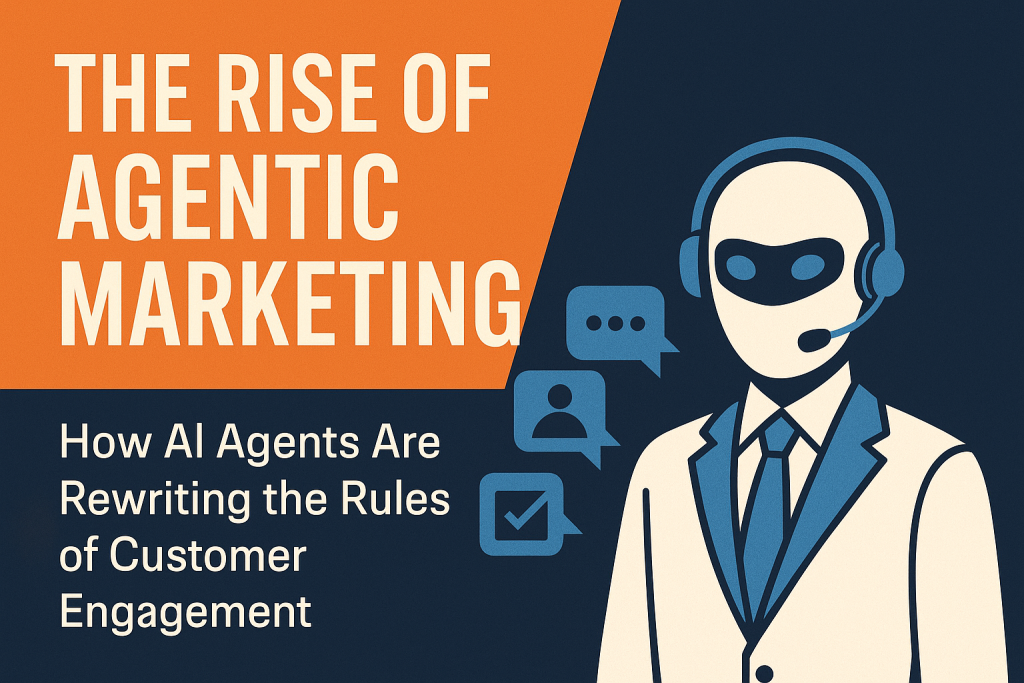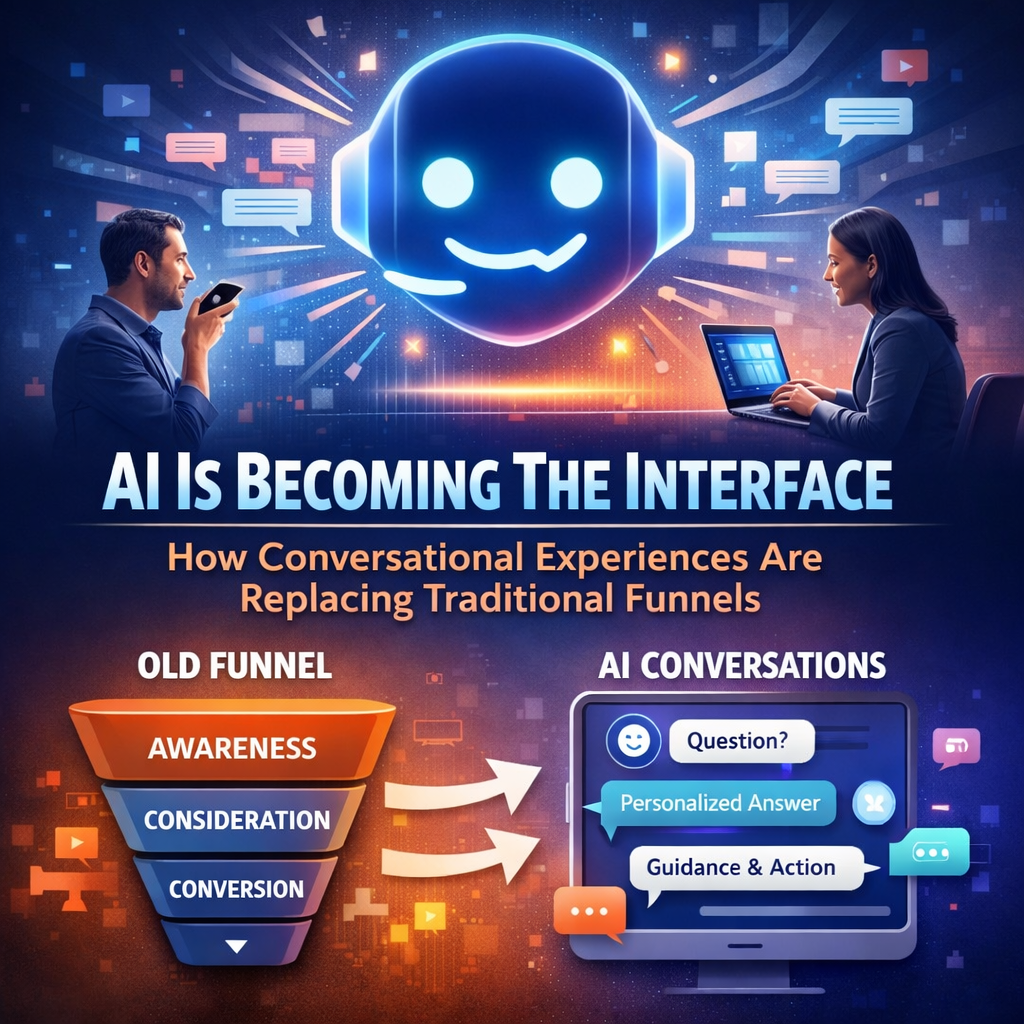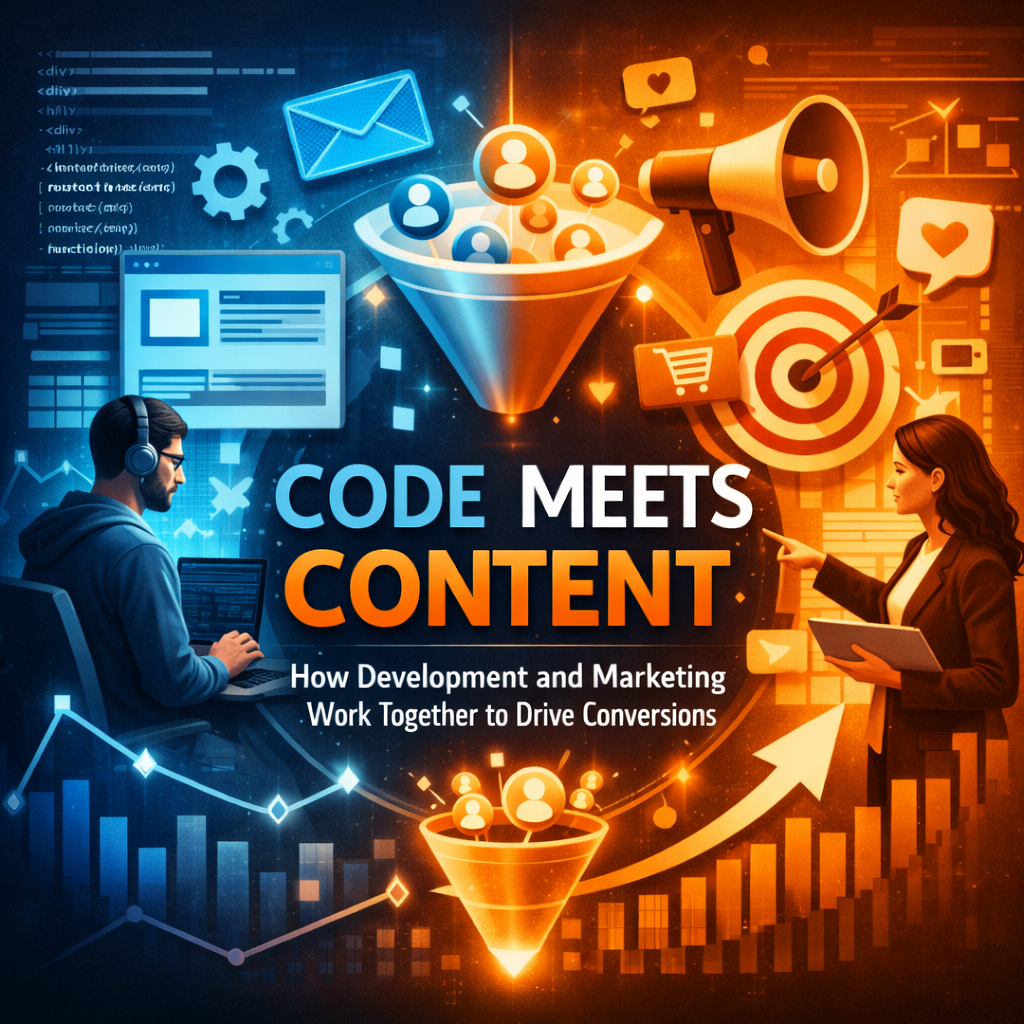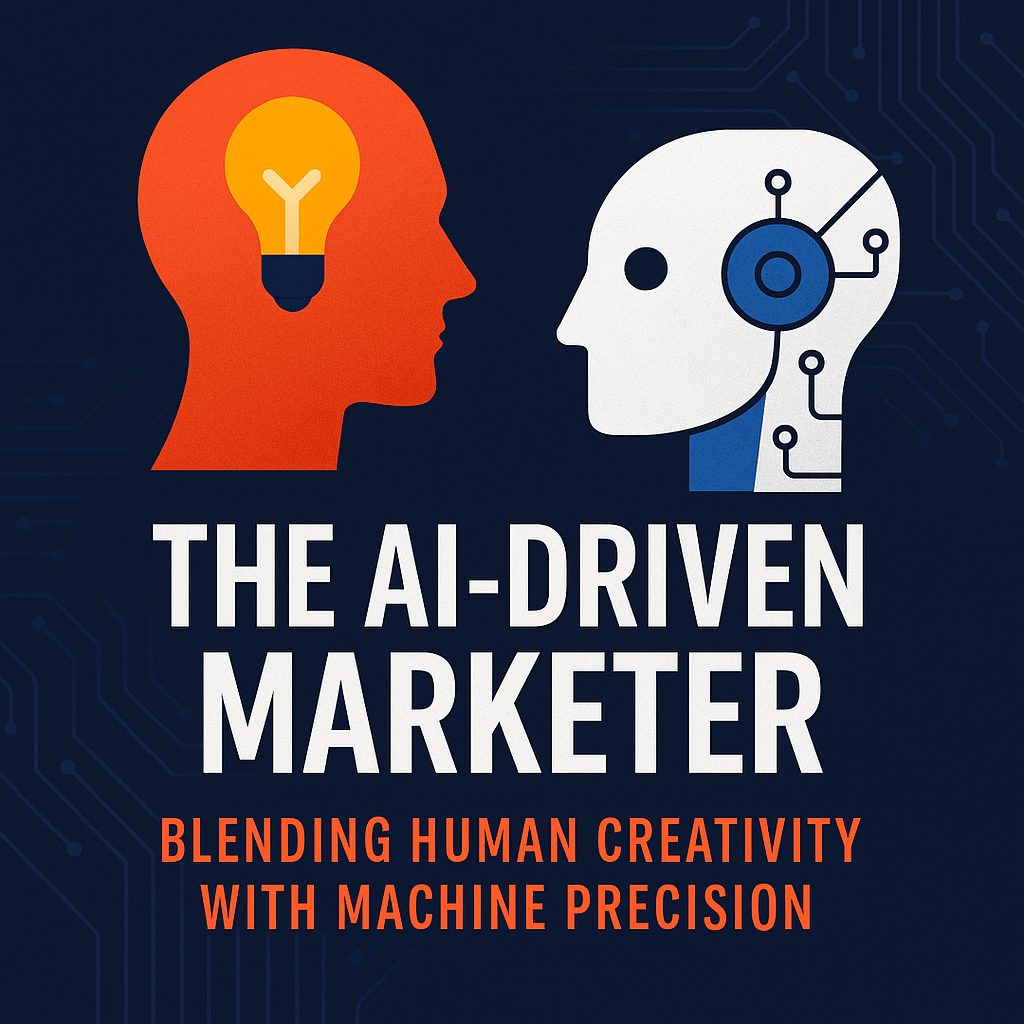In this article we’ll explore what agentic marketing is, why it matters now, how it’s changing customer engagement, what the opportunities and risks are, and how marketers can adopt it.
What Is Agentic Marketing?
At its core, agentic marketing refers to the deployment of AI agents—autonomous systems capable of reasoning, planning, executing actions and learning from outcomes—to carry out marketing and customer-engagement tasks with minimal direct human oversight. qualified.com+2Sprinklr+2
Here are some key characteristics that differentiate agentic marketing from traditional marketing automation or generative AI support:
Autonomy: Instead of simply executing pre-defined rules, AI agents can make decisions, choose actions and adapt based on real-time data and context. Sprinklr+1
Goal-driven: These agents are built around objectives (“engage this segment,” “reduce churn by X,” “increase lifetime value”), and then they chart paths to achieve them. McKinsey & Company+1
Ability to act across channels/workflows: They aren’t just chatbots responding to prompts; they might trigger emails, adjust personalization engines, shift website experiences, escalate to human agents when needed. Fujitsu Blog – APAC+1
Continuous learning and adaptation: They learn from outcomes, refine their strategies and get smarter over time. MarTech+1
In short: traditional marketing automation follows. Agentic marketing leads.
Why Now? The Imperative for Marketers
Several converging forces are putting agentic marketing front and center for digital and marketing leaders.
1. Saturation & Complexity of Touchpoints
Consumers are interacting via more channels, devices, contexts and expect seamless, personalized journeys. Staying reactive is no longer enough. Agentic AI enables proactive and contextually intelligent engagement. Insider+1
2. Data & Real-Time Opportunity
Brands now have access to real-time behavioral data, cross-channel signals and customer profiles. The missing link has been the ability to act on that data in a dynamic, autonomous way—enter agentic agents. Flytxt |+1
3. Shift from Efficiency to Transformation
As one thought-leader noted: the move is no longer just about automating tasks, but about redesigning how work is done, how value is delivered. McKinsey & Company
4. Competitive Differentiation
Research from Cisco found that 68% of customer-service interactions are expected to be handled by agentic AI by 2028. Organizations embracing this now are likely to gain a competitive edge. Cisco Newsroom
Thus, there’s both a push (from complexity and data) and a pull (from competitive urgency) for agentic marketing.
How Agentic Marketing Is Rewriting Customer Engagement
Let’s break down how this shift is changing engagement across the customer journey.
Proactive, Hyper-Personalized Interactions
With agentic agents, brands can move beyond segmentation (“women age 25-34”) to truly one-to-one personalization in real time: choosing the optimal channel, message, offer, timing and next action based on context. Flytxt |+1
For example: an AI agent detects a customer browsing luxury SUVs, checks that they previously showed interest in hybrid models, then triggers a mid-journey offer for a test drive, selects the channel the customer most uses (SMS vs. email vs. app notification), and books an appointment—all autonomously.
Seamless Multi-Channel Orchestration
Because the agent isn’t siloed in one channel (chat, email, web), but can act across them, the engagement feels seamless. The AI agent can recognize that a customer abandoned a checkout on mobile, then send a push notification, update the website state, and assign a human follow-up if needed. Qualtrics+1
Workflows That Respond and Adapt
Agentic agents monitor outcomes and adapt. If a promotion campaign under-performs for a certain segment, the system recalibrates and tries alternative offers, channels or timing. This agility replaces static campaign planning. Insider+1
Intelligence that Converts into Action
Past AI efforts often delivered insights. Agentic marketing systems don’t just tell you what to do—they do it. For example, they might detect customer signals of potential churn, then trigger retention offers, alert a human, and update the CRM all automatically. Sprinklr+1
Transforming the Role of Human Marketers
Marketers shift from executing repetitive tasks to architecting goals, defining policies, overseeing agents, interpreting results and focusing on creative, strategic work that AI can’t yet replicate. McKinsey & Company+1
Real-World Use Cases
Here are some concrete ways agentic marketing is already being applied:
Outbound personalization at scale: AI agents generate and send personalized emails, social posts or ad creatives that adapt in real time to customer behavior. Fujitsu Blog – APAC+1
Autonomous campaign creation & optimization: For example Google announced agentic capabilities in Ads + Analytics, letting AI agents help marketers with campaign creation, onboarding, reporting and optimization. blog.google
Customer support & engagement: Instead of waiting for the user to act, agents detect issues (e.g., delivery delay), proactively reach out, propose solutions and even orchestrate corrective workflows. Sprinklr
Event-marketing and real-time adjustments: In events, agentic AI monitors attendee behavior, identifies drop-off points, triggers re-engagement, adjusts session suggestions. MarTech Edge
E-commerce discovery & purchase automation: As one source noted, when customers use agents, “search gets rewritten” and discovery shifts from SEO to intent-driven automation. CMSWire.com
What Marketers Should Do: A Tactical Framework for Adoption
Adopting agentic marketing requires some strategic preparation. Here’s a step-by-step framework tailored for marketing teams:
1. Define Clear Objectives and KPIs
What does “agentic engagement” mean for you? Better conversion rate? Lower churn? Faster time to value? Define measurable goals so that your AI-agent deployment is not just tech for tech’s sake.
2. Map Use Cases Where Autonomy Makes Sense
Start with contained, lower-risk campaigns where an agent can act within defined boundaries (e.g., welcome sequence, retargeting, churn prevention) and then expand. Salesforce+1
3. Build or Integrate Flexible Infrastructure
Agentic marketing requires:
Real-time data pipelines (behavioral, contextual)
Interoperable systems (CRM, CDP, email / ad / web platforms)
Agent orchestration layer (to define goals, actions, feedback loops)
Monitoring & human-in-the-loop mechanisms for oversight
4. Ensure Human Oversight and Control
While autonomy is core, humans must set guardrails, review agent decisions for fairness, ethics, brand alignment, and intervene when things go off-track. Sprinklr
5. Execute in Iterative, Measured Phases
Deploy a pilot, measure results, iterate. As one guide recommends: “Start small but think big.” Salesforce
6. Evolve Team Roles and Skills
Marketers will increasingly collaborate with AI agents. Their role shifts to designing goals, reviewing outcomes, training agents, refining policies. Investing in upskilling is critical.
7. Monitor Ethics, Trust & Risk
Autonomous systems raise governance issues: bias, transparency, trust, brand risk. Make sure your agentic marketing approach addresses these via auditing, explainability, consent and human fallback. PYMNTS+1
Challenges and Considerations
No strategy is without its caveats. Here are some of the key challenges marketers must keep in mind:
Over-reliance on automation: Autonomous agents don’t guarantee human empathy, brand nuance or emotional context. The “human touch” still matters.
Data quality and integration issues: Agents are only as smart as the data they consume; fragmented or siloed systems will hamper effectiveness.
Governance and ethics: Especially in regulated industries or sensitive customer contexts, autonomous decisions must be monitored for fairness and transparency. PYMNTS
Change management: Shifting to agentic marketing changes team dynamics, roles and expectations. Without proper alignment, you may face resistance.
Evaluation metrics need to evolve: Traditional metrics (click-through rate, opens) are relevant but agent-led engagements demand new KPIs (agent-action success rate, outcome quality, autonomous decision ROI). Insider
Brand trust: If customers feel the interaction is too robotic or lacks authenticity, engagement may suffer. Balancing autonomy with human empathy is key.
The Future Outlook: What Comes Next
Agentic marketing is still relatively early in its adoption curve, but the direction is clear.
We’ll see multi-agent ecosystems: multiple specialized agents (content, sales, support, retention) collaborating and invoking each other to orchestrate complete customer journeys. Business Insider
As more agencies and platforms embed agentic capabilities (e.g., Google Ads, CRM vendors), the barrier to entry falls and the strategic advantage becomes more widespread.
Customer expectations will shift: they’ll expect proactive, conversational, seamless engagement — and brands that can’t deliver risk being left behind.
The distinction between marketing, service and sales will blur: all become part of a continuous customer-lifecycle orchestration powered by agents.
Governance, ethics and regulation will become central: as AI agents act autonomously, ensuring responsible operations will be a differentiator.
In sum, agentic marketing isn’t just a new tool — it’s a new operating paradigm for customer engagement.
For marketers ready to move beyond “content production + automation,” agentic marketing offers a compelling playbook: autonomous, intelligent agents working in real time to engage customers, personalize experiences, orchestrate journeys and ultimately drive measurable outcomes.
But the transformation is not purely technological — it’s strategic, cultural and operational. The brands that win will be those that treat AI agents as partners in engagement, set clear goals, invest in data and infrastructure, maintain human oversight, and keep the customer’s experience at the center.
If you’re thinking about how to pull ahead in 2025 and beyond, ask yourself: Are you ready to stop reacting and start agenting?










